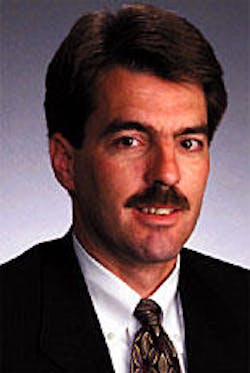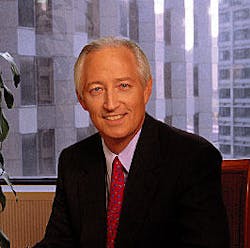Private capital for oil, gas investments remains abundant while public markets sag
US independent oil and gas companies seeking capital to fund their projects must turn increasingly to private equity sources.
The aftermath of the Sept. 11 terrorist attacks on the US have exacerbated a squeeze on public equity capital markets.
Since midyear, US capital markets, including those for the exploration and production sector, had already been soft because of weak economic data and corporate earnings, decreased production, and lower consumer confidence. After Sept. 11, even greater uncertainty resulted in sell-offs in both the equity and debt markets.
"Investors in the E&P sector still are uncertain whether or not long-term prices will hold up and in the near term have oil and gas price concerns due to the decrease in demand for oil and gas in a contracting economy," said EnCap Investments LLC Vice-Pres. M. Sean Smith. He adds that, in the debt markets, banks remain conservative, especially for smaller-cap borrowers. Independents are having a more difficult time getting loans from banks because, as banks have gotten bigger through consolidation, they have tended to focus on loans of $10 million or more.
EnCap's Smith notes that the public equity market for E&P companies for secondary issues dropped 50% from the second quarter to the third quarter of this year, and for initial public offerings of E&P companies, the public equity market is effectively closed.
Availability of capital
Although capital markets are tight as the public equity markets remain concerned about decline of commodity prices and the anemic US economy, private equity remains available.
In fact, the only capital readily available now is in the private domain, finance specialists contend. When asked to rate the current availability of capital, Michael Keener, Director of Producer Finance at Shell Capital Inc., said, "Private capital is still plentiful for good companies and projects."
The bursting of the technology stocks bubble on Wall Street seems to have benefited the market for E&P financing. The boom in technology investing diverted funds away from oil and gas in 1998-99, but the subsequent bust has allowed a return to the usual sources of energy-backing capital, including private and public pensions and endowments. "As a result," said Cameron O. Smith Sr. Managing Director of COSCO Capital Management LLC, "there is currently a large number of private capital sources in the market, raising their next generation of funds, and for the most part receiving strong interest."
One of the newest sources of capital for the independent sector is Duke Capital Partners LLC, a unit of Duke Energy Corp., with a reported $1 billion of available capital. Since its formation earlier this year, Duke Capital Partners has invested senior, mezzanine, and equity capital in the oil and gas producer sector as well as in the independent power industry.
Types of financing
While large companies are accessing the public debt markets, private equity is the preferred method of financing for small companies and startups.
The two main types of private capital are equity and mezzanine, or structured debt. Mezzanine financing providers specialize in loans with equity participation. Though less expensive than pure equity, mezzanine financing allows for higher advance rates against reserves. Some forms of mezzanine financing are subordinated debt, project debt, preferred stock, and volumetric production payments. While equity capital is mostly held in multiyear funds, mezzanine capital is subject to annual budget review and therefore is also subject to the health and whims of the host entity.
Herbert C. Williamson III of Petrie Parkman & Co. sees increased investor interest in higher-potential coupon securities such as master limited partnerships or royalty trusts. Williamson says that comparatively low nominal current and prospective interest rates have generated a greater level of interest in these types of financing, but he warns that these high yield-driven vehicles are only appropriate for the securitization of long-life reserves that require minimal future capital investment and management. He added, "Companies with asset categories that fit this profile might find this method of financing to be cost-effective, especially if the equity market is not giving their valuation much credit for stable production with little upside potential except through higher commodity prices."
While the public debt market is not an option for the vast majority of independent producers, the high-yield market is open, as was recently shown in a deal for Chesapeake Energy Corp., in which the company offered $250 million in senior notes due in 2008, carrying an interest rate coupon of 8.375%. Although the high-yield market can appear relatively expensive, a typical 10-year bullet maturity and rather benign indenture provisions make this a stable yet flexible source of fixed-cost financing.
Other project financing structures include limited partnerships or limited liability corporations formed with the special purpose of providing an influx of capital. Another popular structure is debt with "equity kickers," or overrides, that the provider retains after it has attained a complete return of capital.
Projects and terms
What makes a project attractive for financing differs among capital providers.
"Many (providers) like acquisition financing, some prefer start-up situations, while others are only interested in providing capital to existing companies," according to Keener.
What is key to attracting capital to a particular project is that the project or company be underpinned by proved reserves with growth opportunities from additional acquisitions, exploration projects, or exploitation projects.
F.T. Webster, executive vice-president of Duke Capital Partners LLC, points out that the length of financing varies by deal structure and is typically based on the reserve life profile and the development or business plans, but 3-5 year maturities are the most common.
Private mezzanine financing typically seeks to recover capital in 3-4 years, with the equity component then held for the life of the property. Projects that require longer time frames before cash flow starts to become positive are usually not good candidates for mezzanine financing.
"Private equity funds in the main are raised with a lockup period of 8-12 years, ensuring that even if an investment is made toward the end of the fund's investment period there is at least sufficient time for the investment to mature and coincide with at least one high price cycle," COSCO's Smith said. He also notes that if such a coincidence occurs early in the investment cycle, say after 2 years, then private equity will consider exiting, but only if that decision is supported by management.
Warburg Pincus LLC prefers to hold its equity investments for 5-7 years, says the firm's vice-chairman, Howard Newman.
"We are trying to create companies that can prosper over the cycle," Newman said. The provider's rate of return is determined by how the capital markets value the company, and therefore Warburg Pincus does not look for a current return in the form of interest, dividends, or profits stake. "We think that a growing oil and gas company can use all the capital it can raise, so if it is successful, we prefer to leave our money in the company for the management to reinvest."
Mezzanine providers look for a rate of return of 12-25% usually, but expectations can run as high as 50% depending on the project.
Private capital sources, while claiming a 25% hurdle rate, are actually seeking to achieve a 35% or better rate of return, says COSCO's Smith. He explains that although this sounds terribly aggressive in an industry that is generally perceived to return 15% or less, the private equity funds have met these targets by buying low and selling high, or in industry parlance, they drill when commodity prices are high and wait to make acquisitions when prices are low.
Candidates for capital
Before seeking capital, a company should carefully examine its goals and capabilities, and choose an investor that is a like-minded partner bringing to the table a set of complementary skills of mutual benefit.
There are several key components that capital providers look at to determine whether a particular company will be a good candidate for financing. First on the list is a management team that combines both financial and technical expertise and has a successful track record of value creation. Managements that have scored high financial returns for their investors in the past or have a history of building reserves are especially strong candidates.
Companies should also have a focused business plan, financial strength, and specific growth opportunities. The use of state-of-the-art E&P technologies and a solid technical evaluation of the projects involved also play key roles in decisions to fund companies, especially for mezzanine investors. Shell's Keener says that, when trying to identify a good company to finance, he looks for a well-organized presentation, with all disciplines covered by the company with technical expertise in-house.
Independents can have an easier time accessing capital by demonstrating these characteristics and techniques as well as by establishing relationships with a small number of providers and then shopping their plans around to them. Keener advises that independents can gain some insight by talking to other companies that have been financed by those few providers.
Newman asserts that capital providers view the oil business as a very tough business, and dollars-rather than barrels-are what is important. When discussing a project with a private equity sponsor, a company should explain the business model rather than focus on top prospects. "I understand," Newman said, "that every money-raising presentation by an independent will include some maps; I just want the independent to know that I think the business plan is more important than the maps."
COSCO's Smith carries this thought further: "Independents must learn to prospect for private capital with the same discipline and thoroughness they bring to geological prospects. The more you learn how capital is 'trapped' and how best to design an appropriate 'completion,' the more rewarding will be the financial returns for all stakeholders."
Outlook
The commodities-based E&P business is by nature volatile. Market cycles affect not only the availability and types of opportunities but also the availability and types of capital funding. Funding of financing structures that might be attractive at one point in the market cycle might not be appropriate or available at another point.
Another method to achieve financing for future activity is the divestiture of assets that may be more valuable to other parties. This situation may arise due to owning assets in areas that are not the focus of the current owner, require particular skills needed for future exploration or development not resident within that company, or need more capital than is available at an acceptable cost to the owner, among a number of other reasons.
"Regardless of the reason for any particular acquisition or divestiture," said Williamson, "the market is currently broad and active. It may be that this market could now become even more active due to the decline in pricing from what were generally considered to be high and unsustainable levels."
Director of Producer Finance
Michael Keener
"Private capital is still plentiful for good companies and projects."
Management LLC
Managing Director
Cameron O. Smith Sr."
Independents must learn to prospect for private capital with the same discipline and thoroughness they bring to geological prospects."
Herbert C. Williamson III
"The acquisition and divestiture] market could now become even more active due to the decline in pricing from what were generally considered to be high and unsustainable levels."
Vice-Chairman
Howard Newman"
I understand that every money-raising presentation by an independent will include some maps; I just want the independent to know that I think the business plan is more important than the maps."




